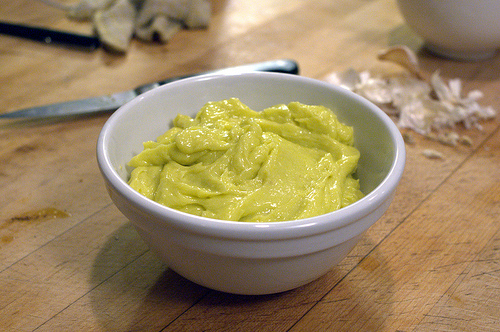What's the difference between mayo and aioli?

In researching mayonnaise over the weekend in order to make my own at home, I started wondering what the difference was between mayonnaise and aioli. The cynic in me thought that the answer was that "aioli costs more on the menu." And that's not entirely UN-true. The word "aioli" is definitely secret marketing code for "this costs more." But there are a few subtle differences as well.
First and foremost, mayonnaise is a commercial product. It's one that you can make at home, certainly. But what you buy at the store is mayo. As far as I am aware, there are no commercial mass-market sources of aioli.
As such, mayo tends to be more bland, pale, and filled with weird stabilizers and preservatives. (And sugar! For no real reason, other than manufacturers' insatiable need to put sugar in everything.) It is also - in an unopened bottle - shelf-stable. Mayo is also available in egg-free versions, whereas aioli always has egg in it.
Aioli is more delicate, complicated and often has more interesting flavors. In this Bon Appetit recipe for homemade mayo, the author recommends that you turn it into aioli by adding minced garlic and substituting olive oil for the canola oil.
According to the traditional definition, aioli is "a smooth Provencal sauce of olive oil and mashed garlic bound with bread and egg yolk." It's creamy and delicious, but it's not a whipped and stabilized emulsion like mayo is. It's more of a smooth paste.
But like everything, people take a lot of liberties with the definitions of foods. Aioli and mayo are not exactly interchangeable, but they are closely related in our contemporary cuisine. Two points at either end of the spectrum, with a wide variety of delicious substances falling in the middle.
Here are some variations you might want to try mixing into your mayo to pump it up:
- Tarragon and capers
- Garlic and lemon
- Rosemary
- Grated horseradish
- Chipotle
- Sriracha
Image courtesy Flickr/qwrrty

2 comments